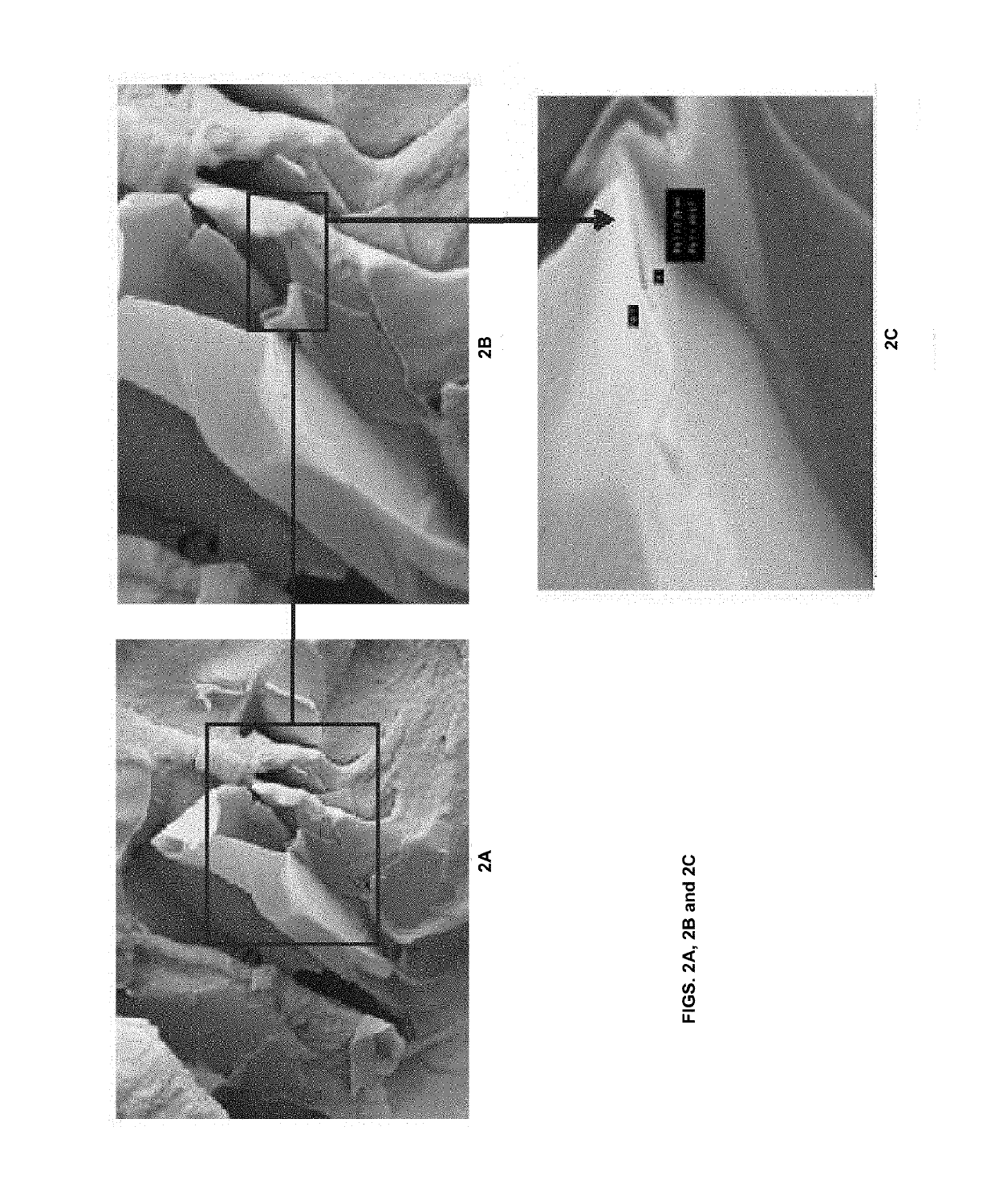In situ exfoliation method to fabricate a graphene-reinforced polymer matrix composite
a polymer matrix composite and exfoliation method technology, applied in the direction of nanotechnology, material nanotechnology, nanotechnology, etc., can solve the problems of insufficient intrinsic electrical or thermal conductivity of polymeric materials for many of these applications, slow progress in the development of low cost methods to effectively produce graphene-reinforced polymer matrix composites (g-pmcs), and inability to meet the requirements of real-world applications. achieve the effect of increasing the strength and stiffness of the graphen
- Summary
- Abstract
- Description
- Claims
- Application Information
AI Technical Summary
Benefits of technology
Problems solved by technology
Method used
Image
Examples
examples
[0093]The present invention is further illustrated by the following examples, which should not be construed as limiting in any way. While some embodiments have been illustrated and described, it should be understood that changes and modifications can be made therein in accordance with ordinary skill in the art without departing from the invention in its broader aspects as defined in the following claims.
[0094]In one embodiment, a small scale extension mixer with a 10-gram capacity was used to compound 2% of SMG with Udel P-1700 Polysulfone (PSU) at 332° C. (630° F.) and under vacuum for 3, 30, and 90 minutes. The method is described below. Samples collected for characterization after each length of time are referred to as 3G-PMC, 30G-PMC, 90G-PMC.[0095]1. 9.8 grams of PSU were added to the mixer and allowed to become molten.[0096]2. 0.2 grams of SMG were added to the molten PSU and mixed.[0097]3. After 3 minutes of mixing time, 3 grams of the G-PMC were extruded out of the mixer and...
PUM
| Property | Measurement | Unit |
|---|---|---|
| thick | aaaaa | aaaaa |
| thick | aaaaa | aaaaa |
| thick | aaaaa | aaaaa |
Abstract
Description
Claims
Application Information
 Login to View More
Login to View More - R&D
- Intellectual Property
- Life Sciences
- Materials
- Tech Scout
- Unparalleled Data Quality
- Higher Quality Content
- 60% Fewer Hallucinations
Browse by: Latest US Patents, China's latest patents, Technical Efficacy Thesaurus, Application Domain, Technology Topic, Popular Technical Reports.
© 2025 PatSnap. All rights reserved.Legal|Privacy policy|Modern Slavery Act Transparency Statement|Sitemap|About US| Contact US: help@patsnap.com



